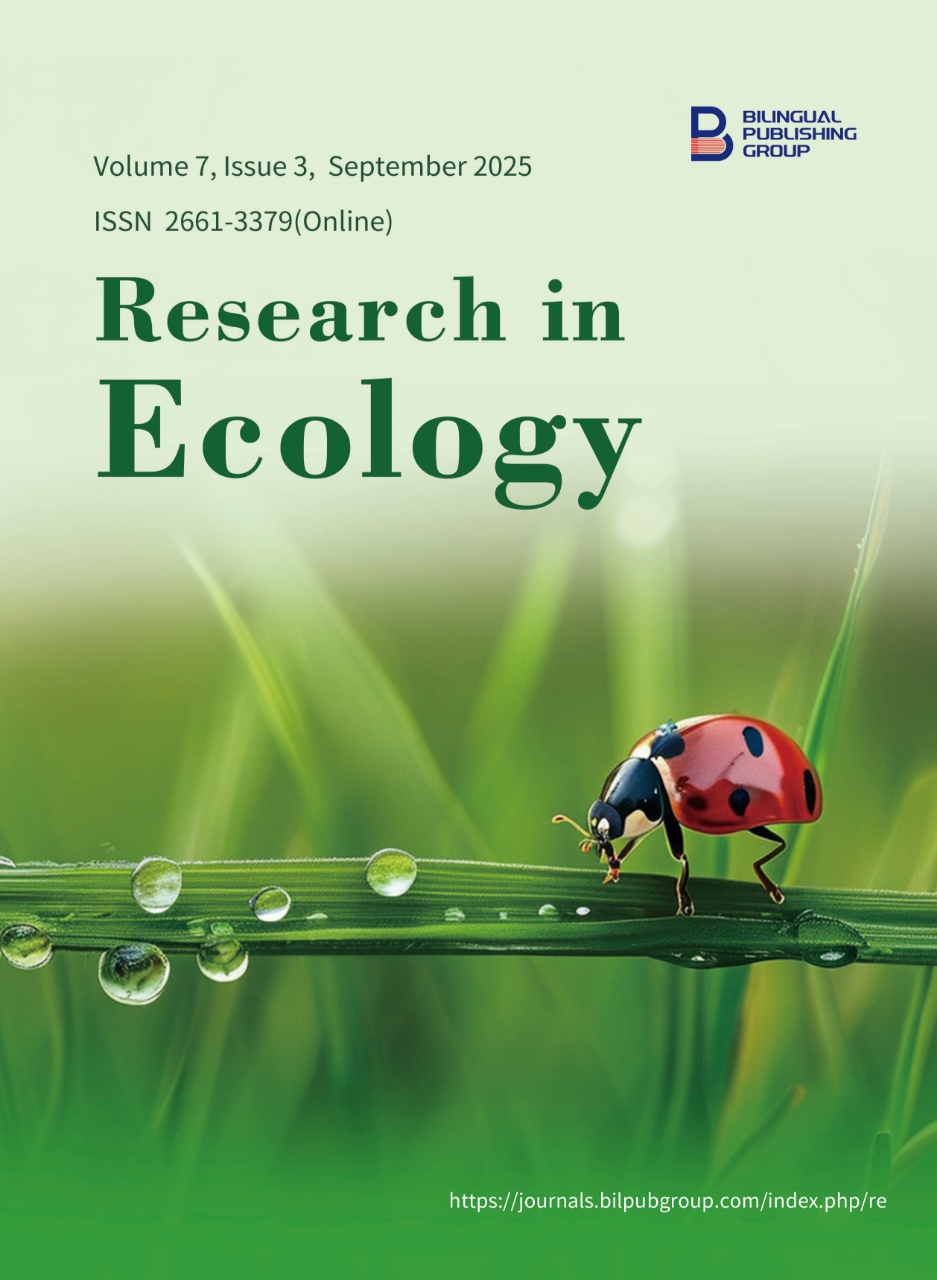
The Impact of Urbanization on Wetland Ecology in Delhi Using AWEI and GIS
DOI:
https://doi.org/10.30564/re.v7i3.9598Abstract
This study examines the spatial and temporal patterns of wetland degradation in Delhi from 1991 to 2021 using remote sensing and GIS techniques. The Automated Water Extraction Index (AWEI) was applied to pre-monsoon Landsat imagery to delineate surface water bodies over the past 30 years accurately. Supervised classification was employed to generate land use maps, while census data was utilized to analyze urbanization trends across the region. Classification accuracy was assessed using Google Earth reference data through a confusion matrix, ensuring the reliability of the land cover analysis. Results reveal a significant decline in wetland extent, especially in densely populated and rapidly urbanizing districts such as North West, South, and East Delhi. During this time, the urban population increased from 52.7% to 97.4%, accompanied by a 70.2% expansion of built-up areas, while wetlands contracted from 32.9 km² to 30.2 km². South Delhi experienced the most severe wetland loss, with water body coverage dropping from 0.800% to 0.025%, whereas North East and Central Delhi maintained higher wetland coverage due to the influence of the Yamuna River and targeted conservation efforts. The study highlights the strong linkage between urban growth and wetland decline, which threatens biodiversity, groundwater recharge, and ecological stability. These findings emphasize the urgent need for integrated urban planning and conservation policies to safeguard wetlands, thereby promoting sustainability and water security in the National Capital Region.
Keywords:
Wetland ecology; Urbanization; GIS; Land UseReferences
[1] U.N World Water Development Report. 2019. Leaving no one behind. Available from: https://www.unwater.org/publications/un-world-water-development-report-2019
[2] Singh, S. Biswas, R., 2022. Analysis of Land Use Change Effects/Impacts On Surface Water Resources in Delhi. Urban Science. 6(4), 92. DOI: https://doi.org/10.3390/urbansci6040092
[3] Du N., 2010. Integrating Surface Water Management in Urban and Regional Planning case study Wuhan in China Ningrui.
[4] Rahman, A., Kumar, Y., Fazal, S., et al., 2011. Urbanization and quality of urban environment using remote sensing and GIS techniques in East Delhi-India. Journal of Geographic Information System. 3(1), 62–84. DOI: https://doi.org/10.4236/jgis.2011.31005
[5] Bertinelli, L., Black, D., 2004. Urbanization and growth. Journal of Urban Economics. 56(1), 80–96. DOI: https://doi.org/10.1016/j.jue.2004.03.003
[6] Singh, R., Mishra, V., Shukla, S., 2023. Geospatial Analysis of land use and land cover dynamics and its impact on urban wetland ecosystem in Delhi NCR region, India, Journal of Scientific and Industrial Research. 82, 783-795.
[7] Dobbs, C., Nitschke, C.R., Kendal, D., 2014. Global Drivers and Tradeoffs of Three Urban Vegetation Ecosystem Services. PLoS ONE. 9(11), e113000. DOI: https://doi.org/10.1371/journal.pone.0113000
[8] Indian Institute of Public Administration report, 2024, World Population Review.
[9] Office of the Registrar General & Census Commissioner, India, 2011. Census of India 2011: Provisional population totals. Ministry of Home Affairs, Government of India. Available from: http://censusindia.gov.in
[10] Shekhar, S., Mao, R.S., Imchen, E.B., 2015. Groundwater management options in North district of Delhi, India: A groundwater surplus region in over-exploited aquifers. Journal of Hydrology Regional Studies. 4, 212–226. DOI: https://doi.org/10.1016/j.ejrh.2015.03.003
[11] Nitin, M., 2014. groundwater storage analysis in changing land use/land cover for 4 districts
[12] Intergovernmental Panel on Climate Change. 2001. Climate change 2001: Synthesis report. Cambridge University Press. Available from: https://www.ipcc.ch/report/ar3/syr/
[13] Government of National Capital Territory of Delhi., 2015. Economic survey of Delhi 2014-15. Government of NCT of Delhi.
[14] U.N., 2014. World Urbanization Prospects, 2014 Highlights. Population Division, Department of Economic and Social Affairs, United Nations. Available from: https://population.un.org (cited 24 July 2019).
[15] Pandey, B.W., Prasad, A.S., Mishra, H., et al., 2017. Urban Dynamics and Resource Consumption: A case study of NCT of Delhi. In The Urban Book Series. 333–351. DOI: https://doi.org/10.1007/978-3-319-47145-7_21
[16] Shahnaz, J., 2018. Land use land cover mapping with change detection: A spatiotemporal analysis of NCT of Delhi from 1981 to 2015, International Journal of Geomatics and Geoscience. 8(1), 0976-4380
[17] Aditya, S., 2016. groundwater environment in Delhi, India, groundwater environment in Asian cities. Elsevier. DOI: http://dx.doi.org/10.1016/B978-0-12-803166-7.00005-2
[18] Chakrabarti, C., 2004. A Manual of the Geology of India: Compiled from the Observations of the Geological Survey of India and Published Sources. Director General, Geological Survey of India. p. 1.
[19] Ramsay, J.G., 1967. Folding and Fracturing of Rocks. McGraw-Hill: New York, NY, USA. p. 568.
[20] Biswas, S.K., 1987. Regional tectonic framework, structure and evolution of the western marginal basins of India. Tectonophysics. 135(4).
[21] CGWB., 2006. Groundwater resources of NCT, Delhi, Report, Central Ground Water Board, Ministry of Water Resources, Government of India, New Delhi,
[22] Delhi, J.B., 2022. Water supply management in Delhi. Government of NCT of Delhi. Available from: https://mohua.gov.in/upload/uploadfiles/files/DJB_Water_PPT_1.pdf
[23] Rai, P.K., Mshra, V.N., Singh, P.D., 2022, Geospatial Technology for Landscape and Environmental Management. Advances in Geographical and Environmental Sciences. Springer, Singapore. DOI: https://doi.org/10.1007/978-981-16-7373-3_7
[24] Balha, A., Vishwakarma, B.D., Pandey, S., et al., 2020. Predicting impact of urbanization on water resources in megacity Delhi. Remote Sensing Applications Society and Environment. 20, 100361. DOI: https://doi.org/10.1016/j.rsase.2020.100361
[25] Acharya, T.D., Subedi, A., Lee, D.H., 2018. Evaluation of water indices for surface water extraction in a Landsat 8 scene of Nepal. Sensors. 18(8), 2580. DOI: https://doi.org/10.3390/s18082580
[26] Kareem, H.H., Attaee, M.H., Omran, Z.A., 2023. Estimating the water ratio index (WRI) and automated water extraction index (AWEI) of bath in the United Kingdom using remote sensing technology of the multispectral data of Landsat 8-oli. Water Conservation and Management. 8(2), 171–178. DOI: https://doi.org/10.26480/wcm.02.2024.171.178
[27] Feyisa, G. L., Meilby, H., Fensholt, R., et al., 2013. Automated Water Extraction Index: A new technique for surface water mapping using Landsat imagery. Remote Sensing of Environment. 140, 23–35. DOI: https://doi.org/10.1016/j.rse.2013.08.029
[28] Kundu, A., 2003. Urbanisation and Urban Governance: Search for a Perspective Beyond Neo-Liberalism. Economic and Political Weekly.
Downloads
How to Cite
Issue
Article Type
License
Copyright © 2025 Grinedge Yadav, Rupesh Kumar Gupta, Arpit Gupta, Ajay Srivastava, Nani Gopal Mandal

This is an open access article under the Creative Commons Attribution-NonCommercial 4.0 International (CC BY-NC 4.0) License.




 Grinedge Yadav
Grinedge Yadav






